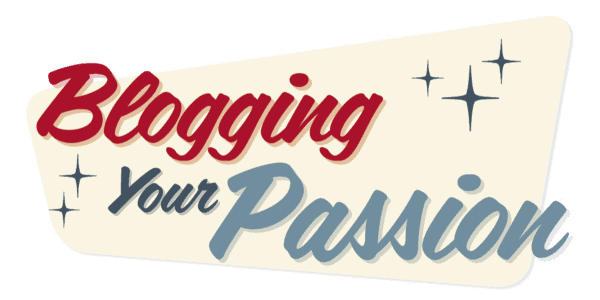How to Use Pinterest for Blogging: A Guide for New Bloggers
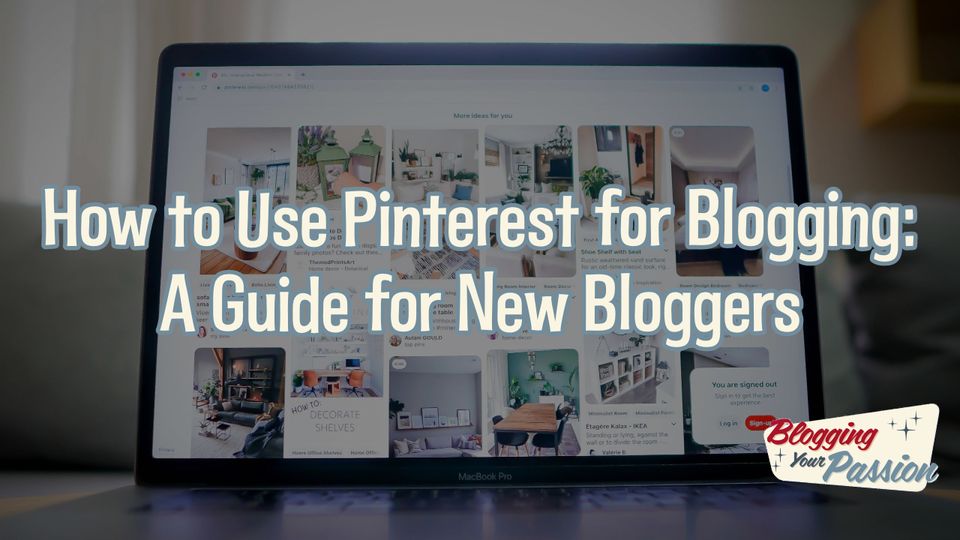
Are you looking to learn how to use Pinterest for blogging effectively?
You've come to the right place.
As a full-time blogger since 2011, I can confidently guarantee that by following the strategies outlined in this article, your blog will experience an uptick in traffic and engagement.
In this comprehensive guide, we'll cover setting up your Pinterest account with optimization techniques that will make it stand out among others.
Even if you just started a blog, you can begin implementing this strategy starting today.
Next, we'll delve into creating content specifically tailored for Pinterest's unique platform while utilizing keywords and hashtags effectively.
We won't stop there; growing your audience on Pinterest is essential for success. We'll discuss following other accounts and engaging with users to expand your reach further.
Additionally, monetizing your presence on the platform through affiliate products or digital courses will be covered in detail.
Lastly, analyzing performance is crucial when using Pinterest for blogging. By understanding traffic sources and audience insights, you can continue refining your strategy for even greater success.
Pinterest is the perfect tool for content creators. If that's you, then let's get started!
Table of Contents (click to expand)
- 1. Setting Up Your Pinterest Account
- Creating an Account
- Optimizing Your Profile
- Linking to Your Blog
- 2. Creating Content for Pinterest
- Pinning Strategies
- Writing Descriptions and Captions
- Using Hashtags and Keywords
- 3. Growing Your Audience on Pinterest
- Following Other Accounts
- Engaging with Other Users
- Joining Group Boards and Communities
- 4. Monetizing Your Pinterest Presence
- Promoting Affiliate Products and Services
- Selling Digital Products and Courses
- Utilizing Ads and Sponsored Posts
- 5. Analyzing Performance on Pinterest
- Tracking Traffic Sources
- Measuring Engagement Rates
- Understanding Audience Insights
- FAQs on How to Use Pinterest for Blogging
- Create Compelling Content
- Add Links to Your Website
- Engage with Other Users
- Analyze Your Performance
- Is Pinterest Worth It for Blogging?
- Does Pinterest Still Work for Bloggers?
- What are Rich Pins?
- What are Idea Pins?
- Final Thoughts
1. Setting Up Your Pinterest Account
If you're new to the world of blogging, or even if you've been at it for a while, one platform that can significantly boost your blog's visibility is Pinterest.
Pinterest isn't really a social platform. It's more similar to other search engines. This visual search engine allows users to discover and save ideas through images called "pins."
In this section, we'll walk you through creating a Pinterest account, optimizing your profile, and linking it to your blog content for maximum exposure.
Creating an Account
To get started with Pinterest, follow these simple steps:
- Visit the Pinterest homepage.
- Select "Sign up" in the top right corner.
- Sign up by either inputting your email address, or linking to Facebook/Google.
- Generate a passcode and provide some essential details about yourself (name, age).
- Choose at least five topics that interest you so that Pinterest can start showing relevant content on your home feed.
Optimizing Your Profile
An optimized profile not only looks professional but also helps potential followers find you more easily.
Here are some tips for optimizing your Pinterest profile:
- Add a high-quality profile picture: Use either a clear headshot of yourself or an image representing your brand/blog logo.
- Create an engaging display name: Include keywords related to your niche in both the display name and username fields (e.g., Jane Smith | Travel Blogger).
- Craft an informative bio: Write a brief but informative bio that tells users who you are, what your blog is about, and how they can benefit from following you. Don't forget to include relevant keywords.
- Link to your website: Add the URL of your blog in the "Website" field so that visitors can easily navigate to it.
Here's an example of how I have mine set up:
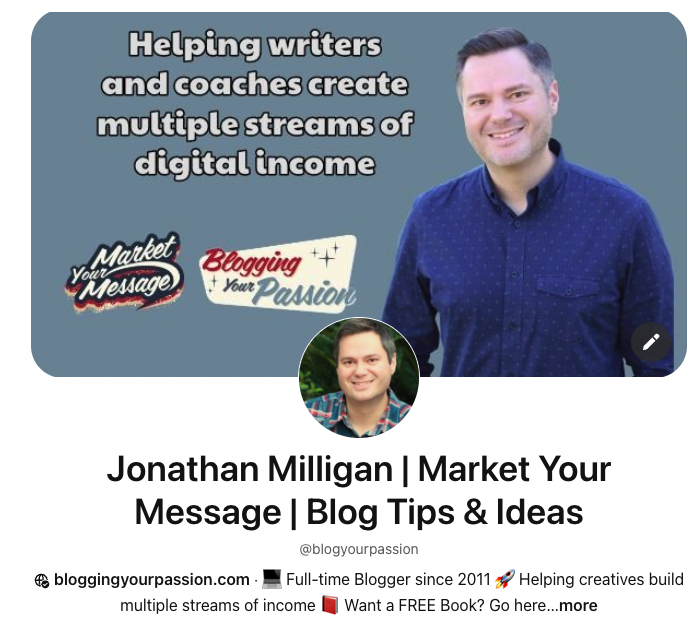
Linking to Your Blog
Blogging Pinterest is all about driving traffic back to your blog content. Follow these steps:
- In the top right corner of Pinterest, click on the three-dot icon and select "Settings."
- Scroll down until you find the "Claim" section.
- Type in your website's URL and click on "Claim."
- Pinterest will provide instructions for adding an HTML tag or uploading an HTML file to verify ownership of your site. Follow these directions carefully.
- Once verified, any pins linking back to content on your claimed domain will now display with a small globe icon next to them indicating they're from a verified source - this helps build trust among users browsing through pins.
Below is a screenshot of my Pinterest claimed accounts section.
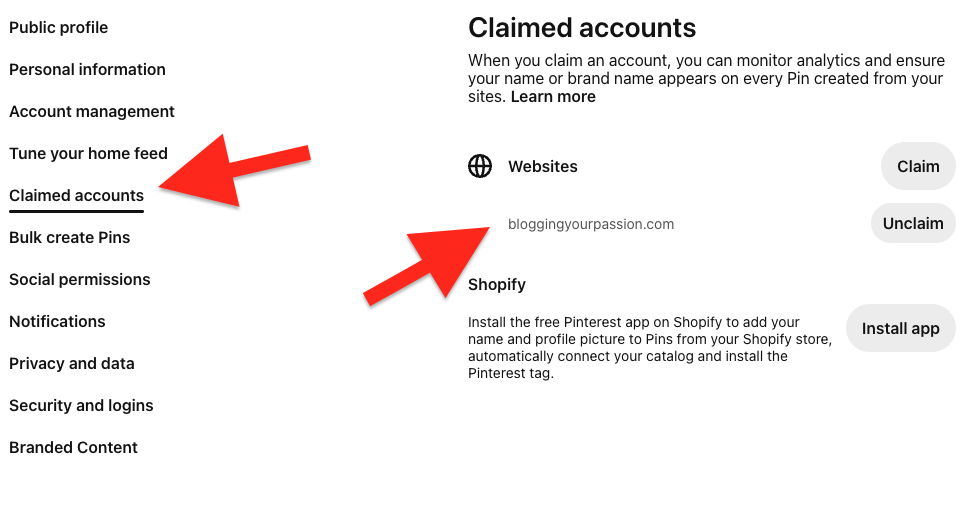
Using Pinterest for blogging can be a game-changer for your online presence.
By following these simple steps, you can create a strong Pinterest profile and drive traffic back to your blog.
Happy pinning.
Having established your Pinterest account, you can now move forward with creating content to maximize reach on the platform.
By understanding pinning strategies, writing captions and descriptions, and using hashtags and keywords correctly, you can maximize your reach on Pinterest.
2. Creating Content for Pinterest
Creating high-quality and engaging content is essential to make your presence felt on Pinterest. Once you understand how to create great pins it makes Pinterest fun and easy!
Creating pins is a simple process but there are some important points to remember.
In this section, we will discuss strategies for creating effective pins, writing captivating descriptions and captions, and using hashtags and keywords to reach the right audience.
Pinning Strategies
To create visually appealing pins that stand out in users' feeds, follow these tips:
- Use high-resolution images: Choose clear, crisp photos or graphics that are relevant to your blog content or topic.
- Create vertical pins: Vertical pins perform better on Pinterest as they take up more space in users' feeds. Strive for a 2:3 ratio (e.g., 600 x 900 pixels).
- Add text overlays: Overlaying text on your pin image can help convey the main message of your content quickly. Use bold fonts with contrasting colors to ensure readability.
- Incorporate branding elements: Include consistent branding elements such as logo, color scheme, or typography across all your pins so users can easily recognize them as yours.
- Use Pinterest templates: Having a Pinterest template ready to go in Canva will make your life so much easier.
Be sure to keep your branding colors and fonts consistent on your Pinterest pins. This will help you to stand out and create brand awareness.

Writing Descriptions and Captions
A well-written description plays a crucial role in attracting users towards clicking through to read more about what you have shared from your blog post or article.
- Craft an attention-grabbing headline: Your headline should be concise yet compelling enough to pique user interest. Here are some proven headline formulas you can use as inspiration.
- Provide a brief summary: Summarize the main points of your content in 2-3 sentences, making sure to include relevant keywords.
- Add a call-to-action (CTA): Encourage users to click through and read more by including an enticing CTA like "Read more" or "Discover how."
Using Hashtags and Keywords
To increase the visibility of your pins on Pinterest, it's essential to use relevant hashtags and keywords strategically. It doesn't matter how pretty your pin is if you don't show up in the search results.
Here are some best practices for optimizing pins:
- Research popular hashtags: Use tools like Hashtagify or Display Purposes to find trending hashtags related to your niche.
- Incorporate long-tail keywords: Long-tail keywords are specific phrases that users search for when looking for particular information. Including these in your pin descriptions can help improve their discoverability. You can use tools like Ahrefs Keyword Explorer, or even Pinterest's own search bar suggestions, as sources for keyword ideas.
- Avoid overstuffing: Don't overload your description with too many hashtags or repetitive keywords; aim for a natural flow while incorporating them into meaningful sentences.
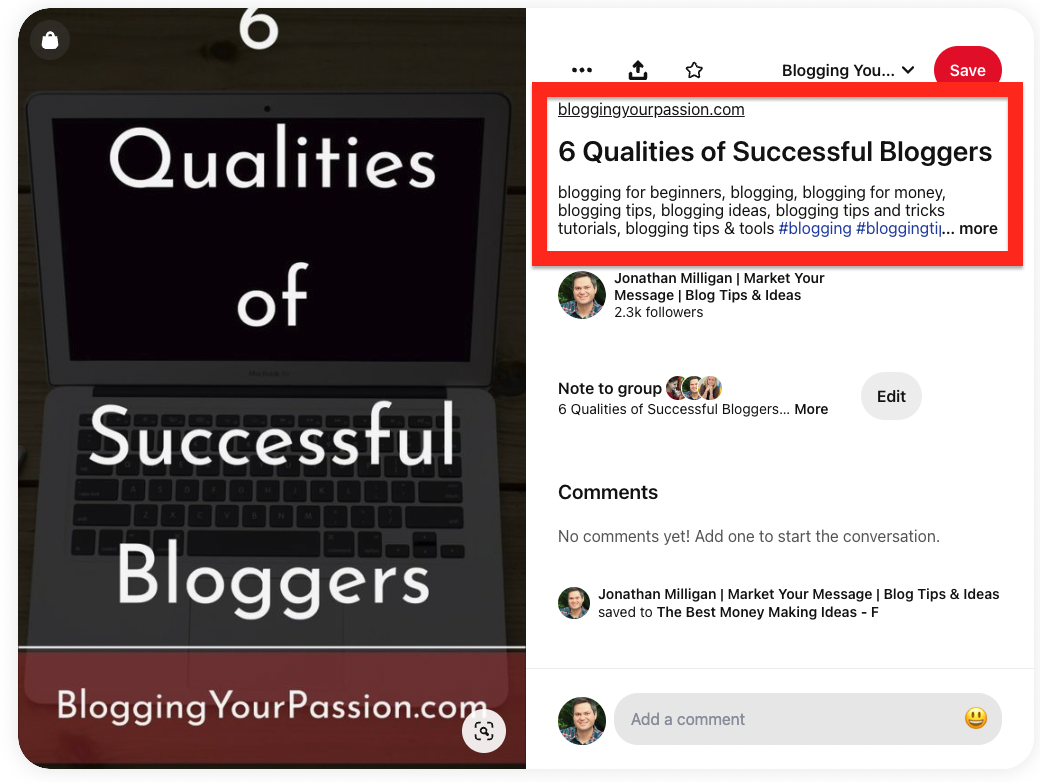
Creating content for Pinterest can be an effective way to draw attention and interact with your blog.
By growing your audience on the platform, you can further expand your reach and gain more followers.
3. Growing Your Audience on Pinterest
Pinterest isn't going to send you traffic just because you post pins. Real Pinterest success boils down to getting more visibility on the platform.
By following other accounts, engaging with users, and joining group boards and communities, you can effectively grow your audience on the platform.
Following Other Accounts
To start growing your audience, begin by following relevant accounts in your niche or industry.
This will not only help you stay updated with the latest trends but also increase the chances of those accounts reciprocating the follow or sharing your content.
Use Pinterest's categories to find popular topics related to blogging that interest you.
- Follow influencers: Identify key influencers within your niche who have a large number of followers and high-quality pins.
- Follow competitors: Keep an eye on what similar Pinterest bloggers are doing by following their profiles as well.
- Show appreciation: When someone follows you back or repins one of your posts, take a moment to thank them for their support via direct message or comment.
Engaging with Other Users
Beyond simply following others, it's essential to actively engage with fellow Pinterest users through likes, comments, shares (repins), and messages when appropriate.
This helps foster relationships within the community while simultaneously increasing visibility for both parties involved.
- Liking Pins: Show appreciation for great content by liking pins from other users in addition to pinning them onto relevant boards yourself.
- Add Comments: If a pin resonates with you, leave a thoughtful comment to spark conversation and demonstrate your expertise in the subject matter.
- Share (Repin) Content: Sharing other users' content not only helps them grow their audience but also provides value to your followers by curating high-quality pins for them to discover.
Joining Group Boards and Communities
A powerful way to expand your reach on Pinterest is by joining group boards and communities relevant to blogging or your specific niche.
A Pinterest board is a collaborative space that allows multiple users to contribute pins, making it easier for others within the community to find and engage with new content.
To join Pinterest group boards or communities:
- Search for relevant groups: Use keywords related to blogging or your niche when searching on Pinterest. Look out for board titles that include terms like "group," "community," or "collaborative."
- Analyze engagement levels: Before requesting an invite, ensure that the group has active members who regularly pin quality content.
- Contact board owners/admins: Reach out via direct message or email (if provided) expressing interest in joining their group along with a brief introduction of yourself as a blogger/writer/coach/course creator.
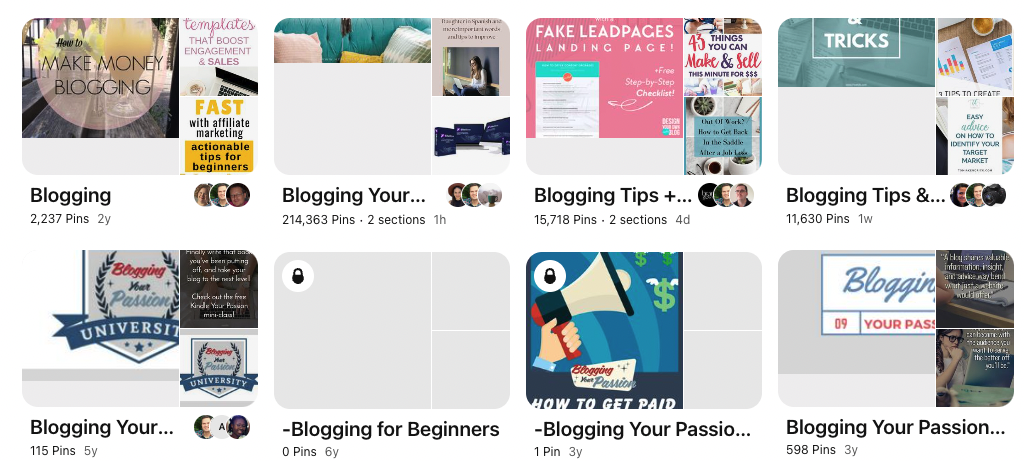
Incorporating these strategies into your Pinterest marketing efforts will help you effectively grow an engaged audience while driving traffic back towards Blogging Your Passion's resources on starting, growing, and monetizing blogs through writing and content marketing.
By utilizing the tips and strategies outlined in this section, you can quickly grow your audience on Pinterest.
With a few more steps, you can begin to monetize that presence by promoting affiliate products and services or selling digital products and courses.
4. Monetizing Your Pinterest Presence
In this section, we will explore various ways to monetize your presence on Pinterest, including promoting affiliate products and services, selling digital products and courses, and utilizing ads and sponsored posts.
Promoting Affiliate Products and Services
Affiliate marketing is a common tactic utilized by bloggers to generate income, where you promote other people's products in exchange for commissions on sales completed through their affiliate links.
To get started with affiliate marketing on Pinterest:
- Join reputable affiliate programs relevant to your niche.
- Create visually appealing article pins that showcase the product or service you're promoting.
- Add your unique referral link in the pin's description along with an honest review of the product/service in a blog post.
- Promote these pins strategically across different boards related to your blog's topics.
Here's an example:

Selling Digital Products and Courses
If you have created digital products like ebooks, printables, or online courses as part of your blogging business model, then Pinterest can be an excellent platform for driving traffic toward these offerings:
- Create eye-catching article pins that highlight the benefits of using your digital product/course (e.g., "10 Steps to Mastering Watercolor Painting: Online Course").
- Add a call-to-action (CTA) button within the pin image directing users towards purchasing/learning more about it ("Buy Now" / "Learn More").
- Include a direct link back to either the landing page where they can purchase/download it from or sign up for further information in the pin's description.
- Pin these images to relevant boards and group boards, ensuring that they reach your target audience effectively.
Let me share an example, I wrote a blog post called: How I Wrote My First Kindle Book in 30 Days. In the blog post, I share links to my sales page for my course, Kindle Your Passion. See the Pinterest pin below.

Utilizing Ads and Sponsored Posts
Pinterest offers a paid advertising option called Promoted Pins, which allows you to boost the visibility of your pins for increased traffic and engagement.
This can be particularly useful if you're looking to monetize through sponsored content or product placements:
- Create high-quality pins featuring the sponsored content/product placement, making sure it aligns with both your blog's niche and Pinterest's guidelines on promoted content.
- Set up a Promoted Pin campaign by selecting targeting options (such as keywords, interests, and location) that will ensure your ad reaches its intended audience.
- Monitor performance metrics like impressions, clicks, and saves within Pinterest Analytics regularly in order to optimize campaigns for better results over time.
Generating passive income from Pinterest can be achieved through effective utilization of the platform.
By analyzing performance on Pinterest, you can gain insight into which strategies are working best for your blog or business and make adjustments accordingly.
5. Analyzing Performance on Pinterest
In order to make the most of your presence on Pinterest, it is essential to comprehend how successful your content is and what needs improving.
By analyzing performance data, you can optimize your pins for better engagement rates and reach a wider audience.
In this section, we'll discuss tracking traffic sources, measuring engagement rates, and understanding audience insights.
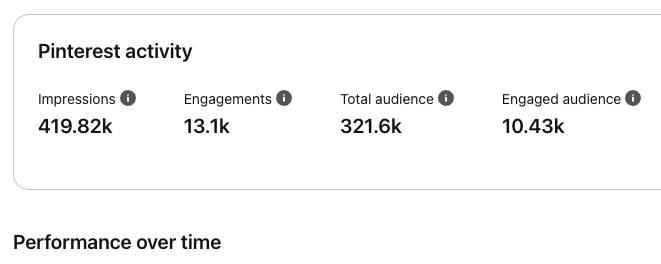
Tracking Traffic Sources
To track where your blog traffic is coming from on Pinterest, you should use Pinterest Analytics.
This tool will provide valuable information about which pins are driving the most clicks back to your website or blog posts.
You can also integrate Google Analytics with Pinterest by adding UTM parameters to the URLs in your pin descriptions.
This way, you'll be able to see exactly which pins are generating traffic in Google Analytics.
Measuring Engagement Rates
Engagement rate refers to the percentage of users who interact with a specific piece of content compared to those who saw it but didn't engage (e.g., click or save).
To measure engagement rates on Pinterest, you should:
- Analyze repins: Repins indicate that someone found value in your content and decided to share it with their followers.
- Monitor comments: Comments offer direct feedback from users about what they think of your pin.
- Evaluate click-throughs: Click-throughs show whether people were interested enough in the pin image or description that they wanted more information by clicking through.
- Track saves: Saves represent users' interest level in your content and their intention to revisit it later.
By regularly monitoring these metrics, you can identify which types of pins resonate with your audience and adjust your strategy accordingly.
Understanding Audience Insights
Pinterest Analytics also offers Audience Insights, a feature that provides valuable information about the people who engage with your content.
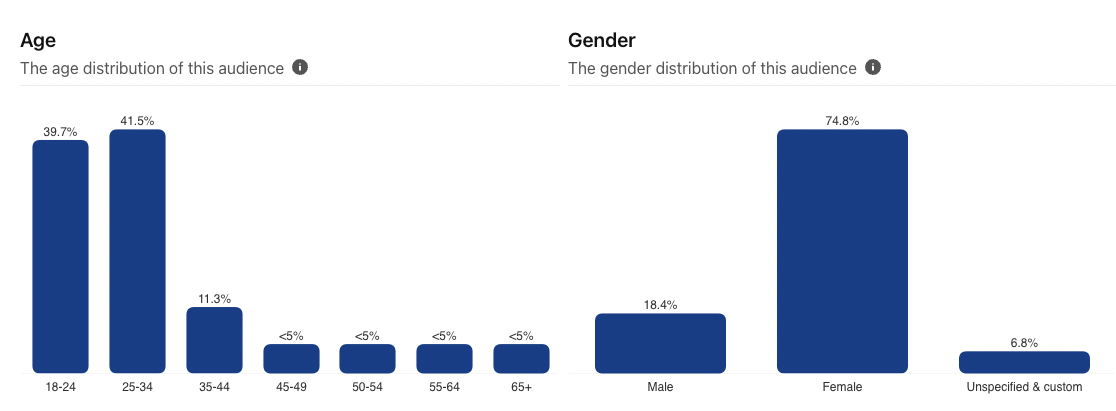
With this data, you can:
- Identify demographics: Learn more about the age, gender, location, and language preferences of users engaging with your pins.
- Analyze interests: Discover what topics or categories are most popular among those interacting with your content on Pinterest.
- Determine devices used: Find out whether users are accessing Pinterest from desktop computers or mobile devices so you can optimize pin designs for different screen sizes.
By understanding user interests and device preferences, you can tailor content to better meet the needs of your audience while also increasing engagement with your brand.
By continually analyzing performance data on Pinterest, you'll be able to refine strategies for creating effective pins while growing an engaged following that drives traffic back to your blog posts and other online offerings.
FAQs on How to Use Pinterest for Blogging
Create Compelling Content
Create visually appealing pins that are relevant to your blog niche and audience.
Use high-quality images and graphics, and make sure your pins are easy to read and understand.
Use strategic pinning techniques, such as creating multiple pins for each blog post and pinning at optimal times.
Add Links to Your Website
Make sure to add links to your website or blog in your pins and in your profile.
This will help drive traffic to your website and increase your visibility on Pinterest.
Engage with Other Users
Engage with other users by commenting, liking, following, and sharing their content.
This will help you build relationships with other bloggers and attract new followers to your account.
Analyze Your Performance
Use analytics tools provided by Pinterest to track your performance and see what's working and what's not.
This will help you refine your strategy and improve your results over time.
Is Pinterest Worth It for Blogging?
Yes, Pinterest can be highly beneficial for bloggers.
With its visual nature and user-friendly interface, Pinterest helps increase the visibility of blog posts while attracting new readers interested in the same topics or niches.
Does Pinterest Still Work for Bloggers?
Yes, Pinterest continues to be an effective tool for bloggers looking to drive traffic to their websites.
By creating eye-catching pins linked directly to blog posts along with well-written captions containing keywords and hashtags, bloggers can attract new readers who are searching on the platform.
What are Rich Pins?
Rich pins are a type of Pinterest pin that includes extra information directly on the pin itself, such as pricing, availability, and links to purchase or learn more about a product. This added information helps users make more informed decisions and can increase engagement with a pin.
What are Idea Pins?
Idea Pins are a type of interactive and multimedia story format on Pinterest, previously known as "Story Pins". Idea Pins allow creators to share multiple images, videos, and text in a single pin, creating a more immersive and engaging experience for the viewer.
They are designed to inspire and educate users with step-by-step tutorials, DIY projects, recipes, and other creative ideas. Idea Pins also include features like music, voiceovers, and stickers to help creators bring their ideas to life.
What's the best way to set up my Pinterest account for blogging?
The first step is to create a business account on Pinterest, not just a personal account. This allows you to access more analytics and features to help grow your blog's audience. You'll also want to make sure you have a profile picture, bio, website link, and relevant board names to portray your brand and blog niche.
How do I create pins that will perform well and drive traffic?
The most important things for pin success are high-quality, relevant visuals, keyword-rich descriptions, and crafting eye-catching pin titles. Make your images vertical with an ideal 2:3 aspect ratio. Include your target keywords naturally in the description, and always add alt text for accessibility. Use free stock photos or original images related to your content.
When's the best time to schedule pins for maximum exposure?
According to analytics, the best time to pin is during peak pinner browsing times in the evening or late afternoon. Pay attention to when your audience is most active on Pinterest and consider scheduling pins using a free tool like Tailwind or Later. Consistency also matters, so stick to pinning fresh content daily if possible.
How can I organize my Pinterest boards effectively?
Start by creating boards around your main blog topics and categories. You can then break those down into more specific boards as needed. Keep board names simple and descriptive. Have one main board for your newest blog pins as well. Pin your blog posts across multiple relevant boards to increase reach.
How do I measure the success of Pinterest for my blog?
Use Pinterest's analytics within your business account to track key metrics like your monthly viewers, website clicks from Pinterest, top performing pins, and audience demographics. You can also see how Pinterest ranks as a traffic source for your blog using Google Analytics. Monitor your number of followers and engagement over time as well.
Final Thoughts
In conclusion, using Pinterest for blogging can be a powerful tool to grow your audience and monetize your presence.
By setting up your account, creating content that resonates with your target audience, growing your following through engagement and community involvement, and analyzing performance metrics regularly, you can optimize the platform to achieve success.
